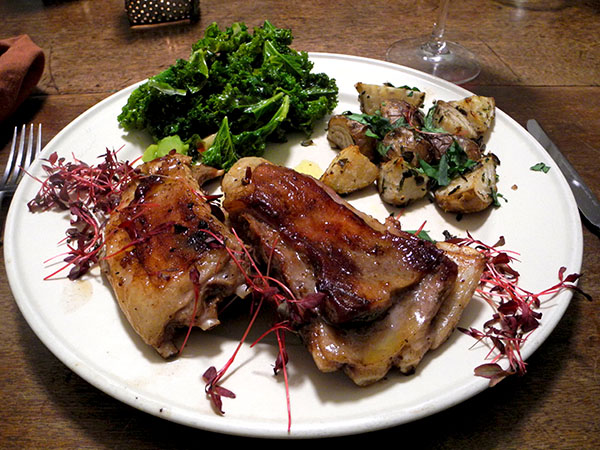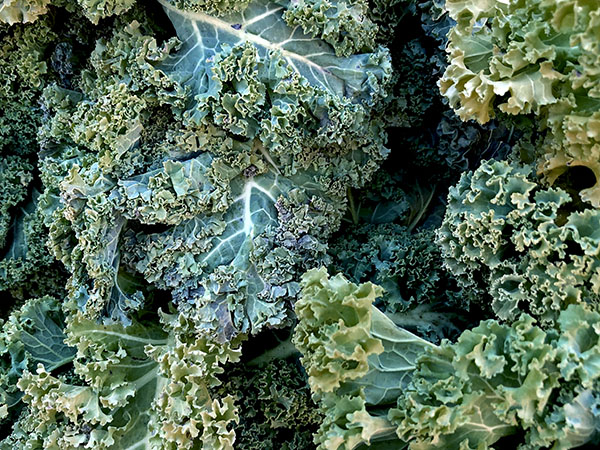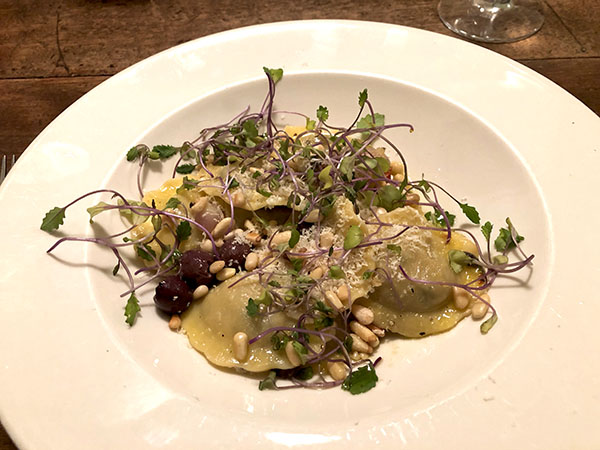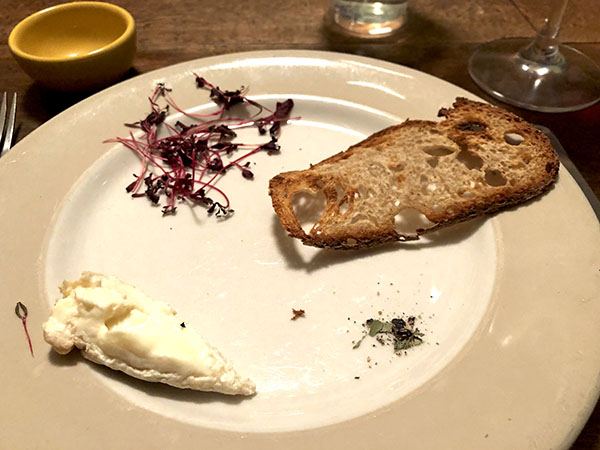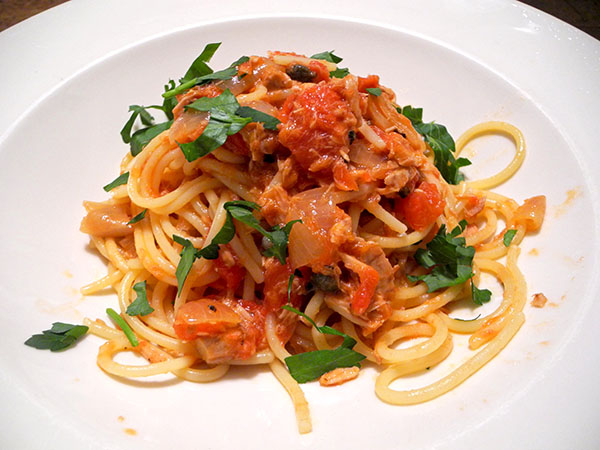
Last night’s dinner represented a return to Italy, or at least one interpretation of Italy. While there were no fish stalls in the Greenmarket on Monday, again because of the weekend’s bitter cold, but I did manage to put fish on the table.
Three years ago I wrote this about this terrific dish, and except for the fact that I actually haven’t served it since, for reasons I can’t explain even to myself, I stand by every word:
This simple meal became a standard in our kitchen from the day I first tried it. It follows a classic and delicious Mark Bittman recipe which can be put together entirely with ingredients normally always on hand, meaning it’s perfect for those times when the cook has not had a chance to get to a market of any kind. Bittman describes the parsley ‘garnish’ as optional, and so the dish maintains my boast, but I can’t imagine not including what is the most common herb in the kitchen, if at all possible.
- one medium roughly-chopped sweet yellow onion from Norwich Meadows Farm, stirred in a couple tablespoons of olive oil over a medium-high flame inside a large enameled cast iron pot until softened, followed there by a teaspoon of crushed dried Sicilian pepperoncino from Buon Italia, a generous amount of freshly-ground black pepper, 2 tablespoons of salted Sicilian capers, rinsed, and the contents of one 14-ounce can of Simpson Brands domestic (San Marzano-type) plum tomatoes, the tomatoes themselves first roughly chopped, the mixture cooked, stirring occasionally, until the tomatoes began to break up, the heat then lowered and the pot kept on the flame for 5 or 10 minutes more, then just before the pasta itself (8 ounces of Setaro spaghetti from Buon Italia), boiled barely al dente was added, 6 ounces of Portuguese Ás do Mar belly meat tuna in olive oil, already slightly flaked, slid into the sauce and mixed in, some reserved pasta water added and stirred in to ensure the pasta was not really dry, arranged in 2 shallow bowls, garnished with chopped parsley from Westside Market
- the wine was an Italian (Calabria) red, Scala, Ciro Rosso Superiore, 2013, from Flatiron Wines
- the music was Mozart’s 1772 ‘one-act dramatic serenade’, ‘Il sogno di scipione’, Ian Page condicting with the Classical Opera Company
